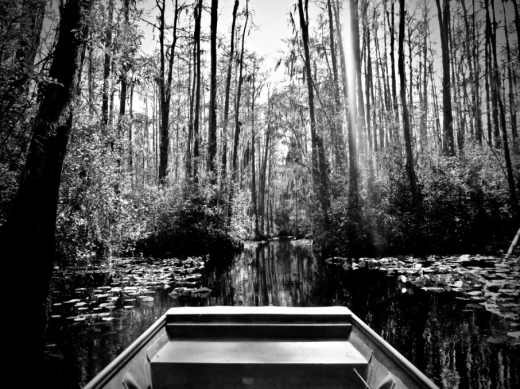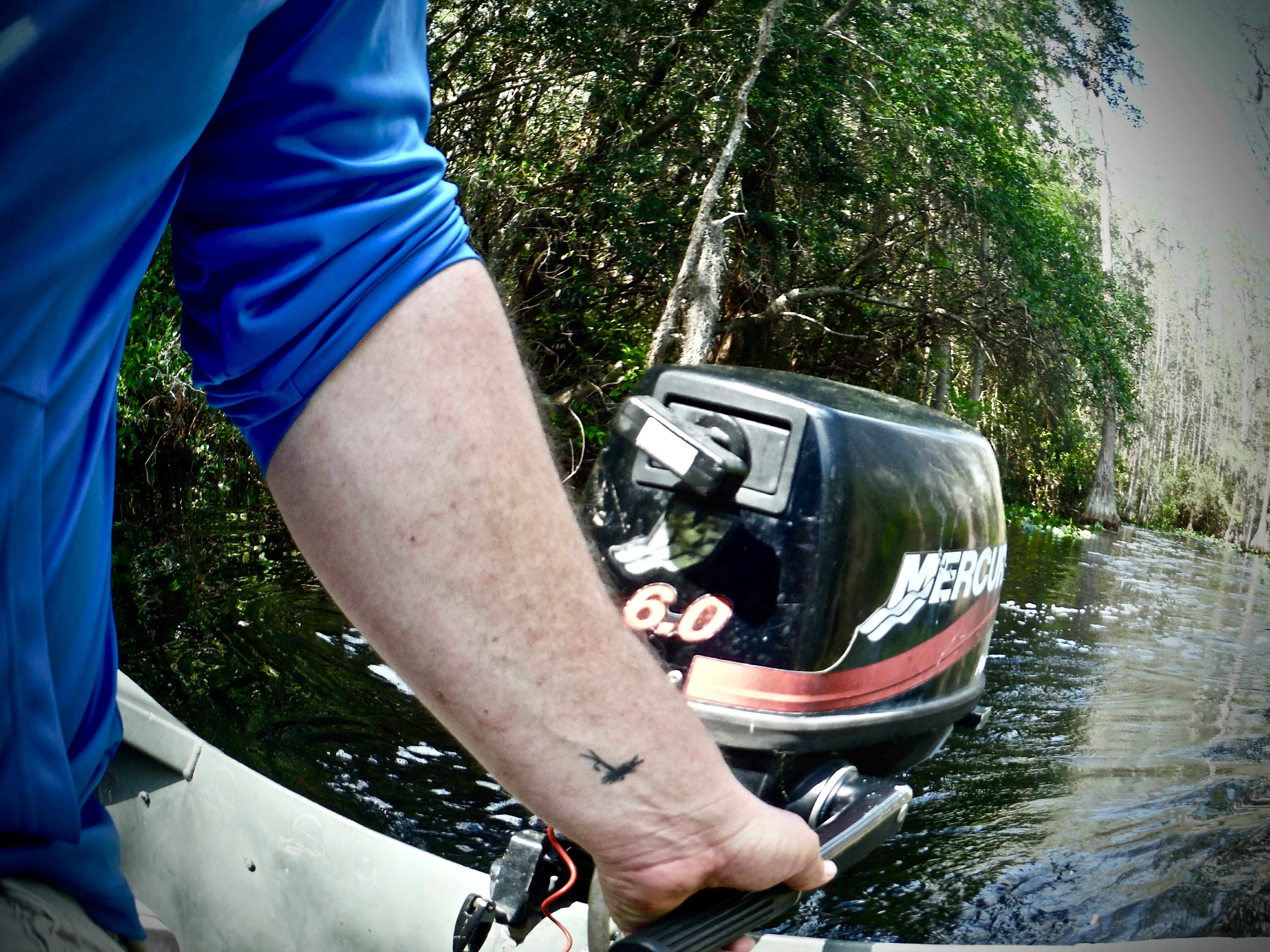By Chris Hunt
As a kid, I remember seeing little jon boats cruising up and down the Sabine River along the border with Texas and Louisiana, their pilots running trot lines for channel cats and generally looking like they were having an excellent time.
The boats, squared off in the front and pushed by a hand-steered outboard, could plow through shallow water, turn on a dime and generally make the art of collecting food from the river a much easier proposition. The fellows sitting in the stern, just off to one side, could anchor the boat in a slough and cast to bass and bluegill with little in the way of effort. Then, when the fishing was done, they’d just crank up the motor and off they’d go, to the next fishing hole downriver.
The boats were always painted a dull army green or a flat gray. Their thin aluminum hulls were significantly dented, both from the outside thanks to collisions with cypress knees and pier pilings, and from the inside, when the captain would have to take the emergency paddle and beat back the cottonmouths that inevitably fell from the Spanish moss into the boats.
I envied the freedom those guys had thanks to those little boats, perhaps the simplest of the motor-propelled crafts.
I wanted one. I wanted to be able to tool around the Sabine, chase cats and bass and maybe the occasional gar. I wanted to be that guy … the solitary fisherman braving the snakes, the gators and the muddy water of the river. It looked idyllic and a little rogue. I only suspected that each of these fishermen would return home to their little riverside shacks, filet out the morning’s catch and while away the rest of the day with their feet up and a cold beverage keeping him company. And an old hound dog. They all had saggy-eyed old hound dogs, right?
Yes, sir. That was the life.
Last week, I finally got my wish. Thanks to the folks at Okefenokee Adventures in deep, southern Georgia, I got the chance to tool around the Okefenokee National Wildlife Refuge in a little jon boat prowling for fish and braving the gators. I got to be “that guy,” hand on the tiller of the little motor, cruising through the cypress and acting like I didn’t have a care in the world. And, for a time, I didn’t.
 alt=”” title=”” />
alt=”” title=”” />
Now, I’ll say this. Jon boats are great little crafts for shallow water. They literally will go anywhere, so long as the water’s deep enough to accommodate the motor. But, they don’t come outfitted with anchors—it is a national wildlife refuge, after all, and disturbing the natural order of things is discouraged. Plus, it’s a blackwater swamp—there’s no telling what lies beneath that might tangle up an anchor and leave a party of tourists stuck in the middle of nowhere.
So, of course, this made for some challenging fishing. I found that I could drift along easily enough and fly cast at the same time, but I was at the mercy of the swamp’s subtle current (it flows east to the Atlantic out of the St. Mary’s River and west to the Gulf of Mexico out of the Suwanee River) and would often end up in the midst of a garden of lily pads and generally eye to eye with one of the swamp’s many gators.
Creepy.
After a fashion, I figured it out. In order to fly cast to the swamp’s burly bowfin, I needed to use the unique nature of the Okefenokee itself as my assistant. The Okefenokee rests over a bed of slow-rotting peat—it’s a about 12 feet thick. Every so often, the methane gas trapped beneath the peat pushes a section of the swamp’s bottom to the surface in what’s called a “blow up” for obvious reasons. These “blow ups” become anchors for new plant growth in the swamp, but they really are just floating mats of peat that give the swamp it’s American Indian name which, translated, means, “land of trembling earth.”
I found that, if I could slide the boat’s bow onto one of these embryonic land masses (scientists call them “batteries”), I could enjoy relative stability and fly cast to either side of the boat until it was time to move on.
I felt pretty accomplished as other tourists would motor or paddle by and see me landing one of the dozens of bowfins I pulled from the swamp’s dark waters. There I was, in the middle of a 400,000 acre swamp, tooling around in a beat up old jon boat, catching fish like I knew what I was doing.
I remembered how cool I thought those guys were all those years ago, and how much I wanted to be just like them.
I might not be as cool as they were, but I felt like I was, just for a little while.
Sometimes, dreams do come true.
Chris Hunt is the national editorial director for Trout Media. He lives and works in Idaho Falls, Idaho.



